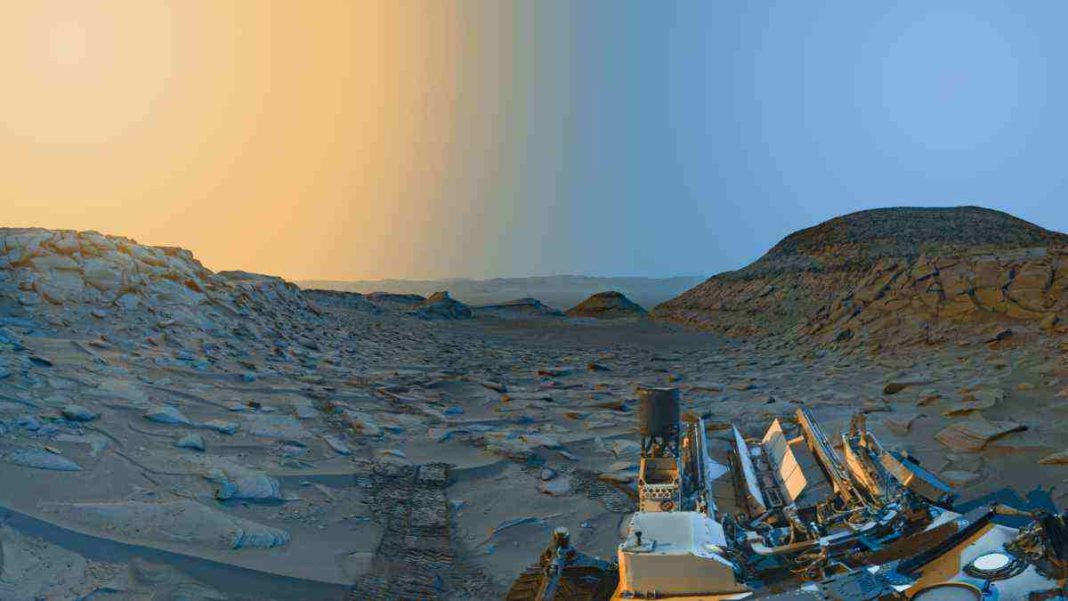UNITED STATES: Recent findings from an ambitious collaboration between Indiana University Bloomington’s Professor Juergen Schieber and NASA’s Curiosity Rover mission are igniting fresh intrigue in the quest to understand the potential for early biological evolution on Mars.
In a study published in the renowned scientific journal Nature, Schieber and his team unveiled compelling evidence of sustained wet-dry cycles on the Martian surface, shedding light on the possibility of prebiotic chemical evolution and the emergence of life.
The study builds upon a growing body of evidence suggesting that Mars had habitable conditions in its early history.
The Red Planet, it seems, boasted the necessary ingredients for life, including water, energy sources, and essential elements such as carbon, hydrogen, nitrogen, oxygen, phosphorus, and sulfur.
Moreover, the presence of transition metals, which play a crucial role in catalytic processes vital for life, added further weight to the hypothesis.
However, the question of whether these favorable conditions could have sparked the development of life remains unanswered.
That’s where the joint efforts of Professor Juergen Schieber and NASA’s Curiosity Rover come into play. The team’s research focused on tangible evidence indicating sustained wet-dry cycling on Mars—a phenomenon deemed critical for prebiotic chemical evolution, a precursor to life’s emergence.
The researchers turned their attention to Gale Crater on Mars, where the Curiosity Rover has been diligently collecting data.
Examining 3.6 billion-year-old mudstones, the team uncovered a distinct pattern of mud cracks brimming with salt, forming intricate geometric shapes like hexagons and pentagons.
An intriguing revelation emerged as the mud dried out, contracting to form T-shaped junctions, mirroring findings previously observed at a site known as “Old Soaker” on Mount Sharp.
What sets this discovery apart is the realization that the newly discovered mud cracks resulted from repetitive interactions with water.
This ongoing wet-dry cycle transformed the T-shaped junctions into Y-shaped structures, ultimately culminating in the formation of complex hexagonal patterns.
These patterns are indicative of sustained wet-dry cycling, a phenomenon integral to the development of prebiotic chemistry—a fundamental step in the creation of complex organic molecules, a potential precursor to life.
Professor Schieber’s expertise in Earth’s geology was a driving force behind this revelation. His proposition of the presence of mudstones on Mars granted him involvement in NASA’s Mars Science Lab (MSL) Curiosity Rover mission.
Since its touchdown in August 2012, the Curiosity Rover has been unearthing invaluable insights into the planet’s past.
The process of sustained wet-dry cycling on Mars, influenced by cycles of desiccation, recharge, and flooding, is responsible for forming fractures in ancient lake beds.
The resulting high salt concentrations due to evaporation lead to mineral crystallization and sediment solidification.
The geometric patterns etched onto the mudstone surfaces offer a window into the preservation of these processes over billions of years.
As the fractures’ residual water possibly held elevated levels of dissolved salts and even organic molecules, the setting seems ripe for the emergence of complex organic compounds.
The researchers speculate that these molecules, under increasing salinity, may have interacted and polymerized, setting off a sequence of intricate chemical reactions that could potentially pave the way for life’s emergence.
The revelation of these mesmerizing polygonal patterns evoking honeycombs within Mars’ ancient mudstones has injected a fresh wave of enthusiasm within the scientific community.
The notion of wet-dry cycling driving significant chemistry within fractures introduces a new dimension to the ongoing exploration of Mars’ habitability and the tantalizing prospect of life’s early origins.
Also Read: NASA’s Parker Solar Probe Achieves Record-Breaking Speed on Route to Venus Flyby



